Going braless will never catch on – no matter how hard fashion tries
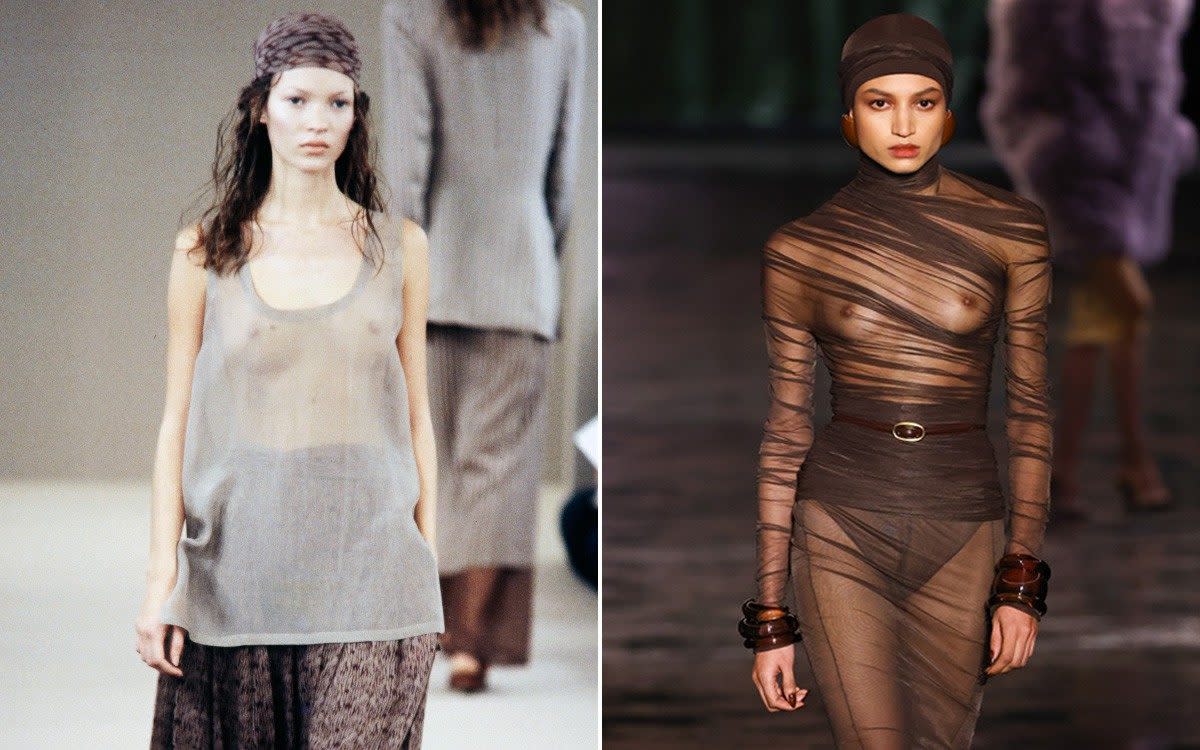
With Paris Fashion Week set to continue through till next Wednesday, all eyes are currently on the catwalk to see which trends women will be wearing next season. Will “quiet luxury” finally die a death? Perhaps mini skirts will be back in vogue again.
Challenging as they may be to wear, at least a mini skirt provides some coverage; the primary function, one might think, of clothing. Although not, apparently, for Anthony Vaccarello, the creative director of Saint Laurent, whose new collection displayed more nipples than you’d spy on a Swedish nudist beach. Of the 48 looks shown, 36 featured tops so transparent as to leave nothing to the imagination.
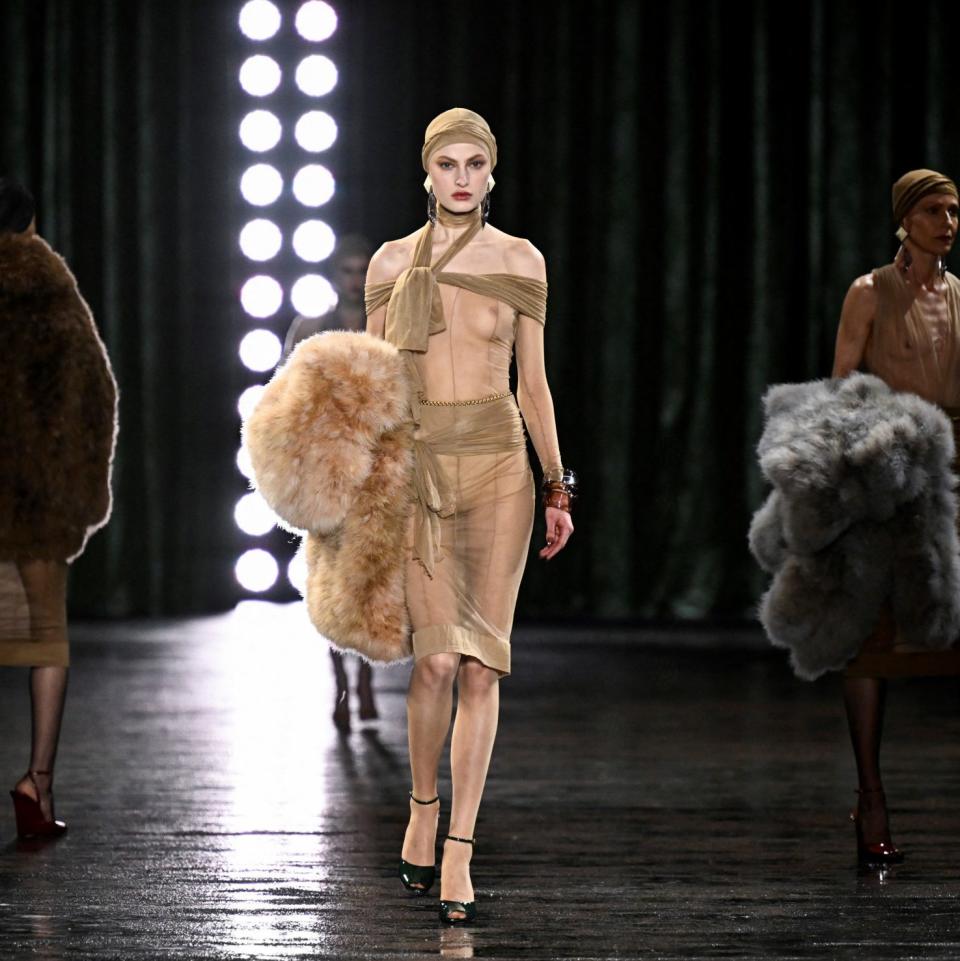
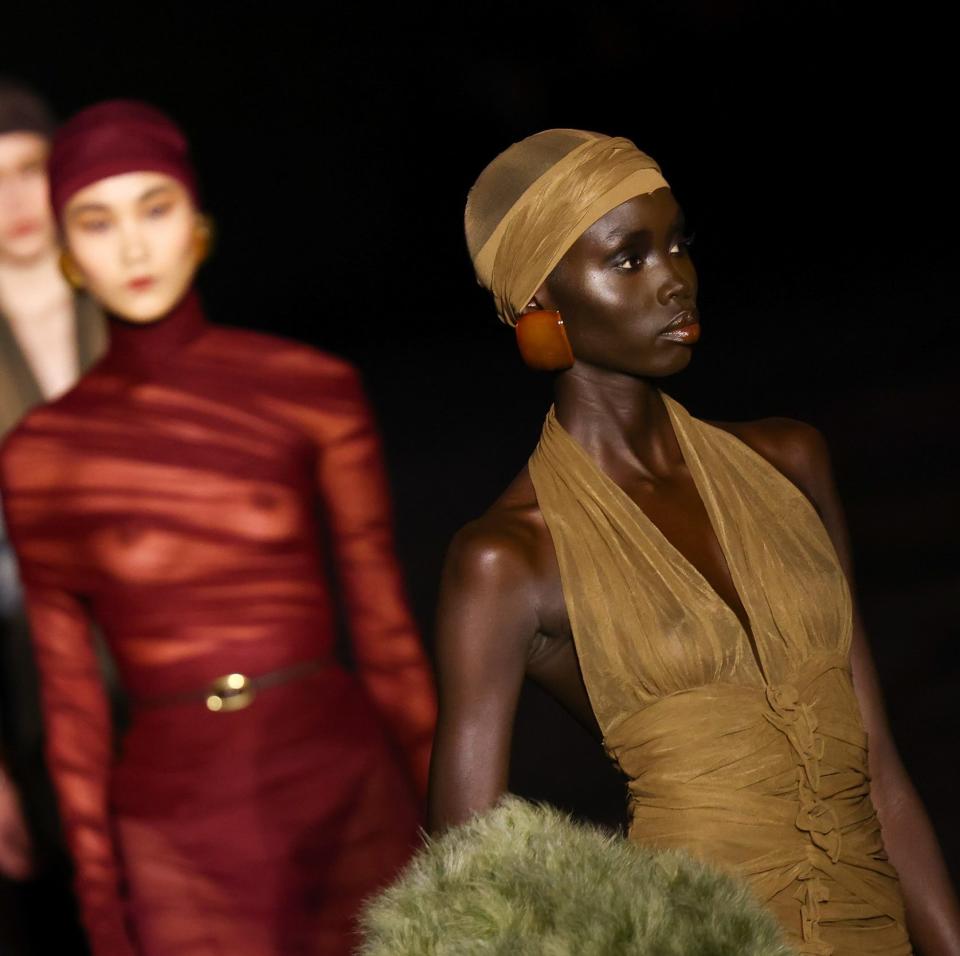
If Saint Laurent wasn’t one of the most influential – read “copied” – labels in the firmament, this wouldn’t be so alarming. But where YSL leads, the high street tends to follow. This means that the sheer trend is unlikely to remain within the confines of the catwalk.
Speaking after the show, Vaccarello stated: “I’d rather people loved it or hated it than feel nothing at all.” There is certainly no danger of that. Reactions ranged from anger to amazement to bemusement, with some critics viewing it as a retrogressive step at a time when women’s bodies are already highly objectified.
Provocative as the collection was, it was far from new territory for the storied French house. In 1966, Yves Saint Laurent outraged Parisian society by showing a sheer blouse, saying “nothing is more beautiful than a naked body”.
It’s a view presumably shared by the new designer at Chloé. Chemena Kamali’s debut collection included a series of diaphanous dresses through which the models’ breasts were clearly visible, in an aesthetic that echoed Karl Lagerfeld’s tenure at the house in the 1970s.
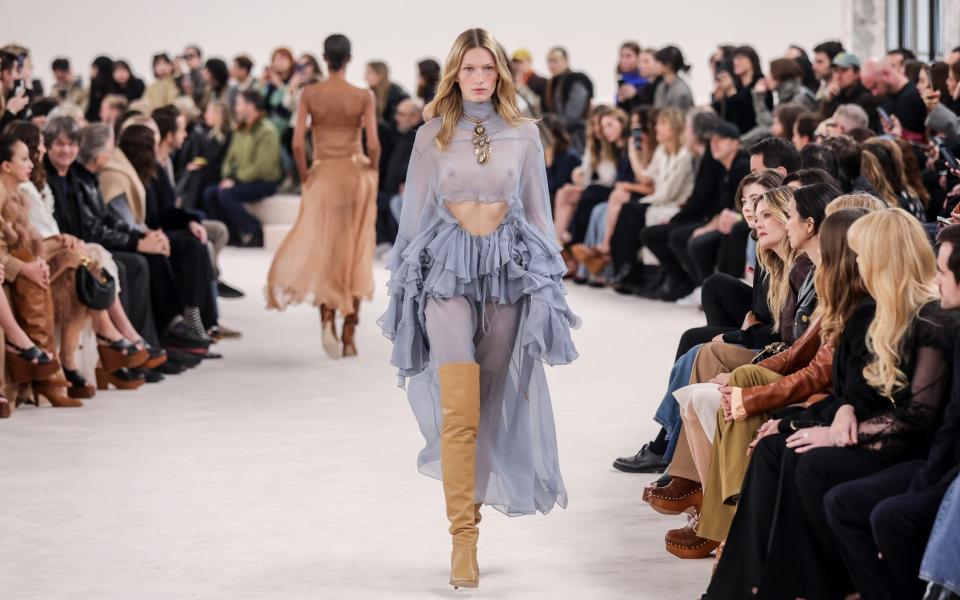
It seems as though fashion’s current obsession with the 1990s extends beyond hipster jeans, and is also embracing that decade’s penchant for bare breasts. In 1991, Sonia Rykiel sent the model Tyra Banks down the catwalk in a fishnet top that exposed her nipples.
In 1992 – the same year that the New York Supreme Court amended nudity laws, allowing women to go topless in public – Madonna appeared in a Jean Paul Gaultier show held to benefit American Foundation for AIDS Research, wearing a pin-striped dress that stopped short of her breasts, which were completely exposed and given fetishistic overtones by dint of a leather harness. In 1993, Naomi Campbell’s breast deliberately tumbled from a lavender gown at a Chanel couture show.
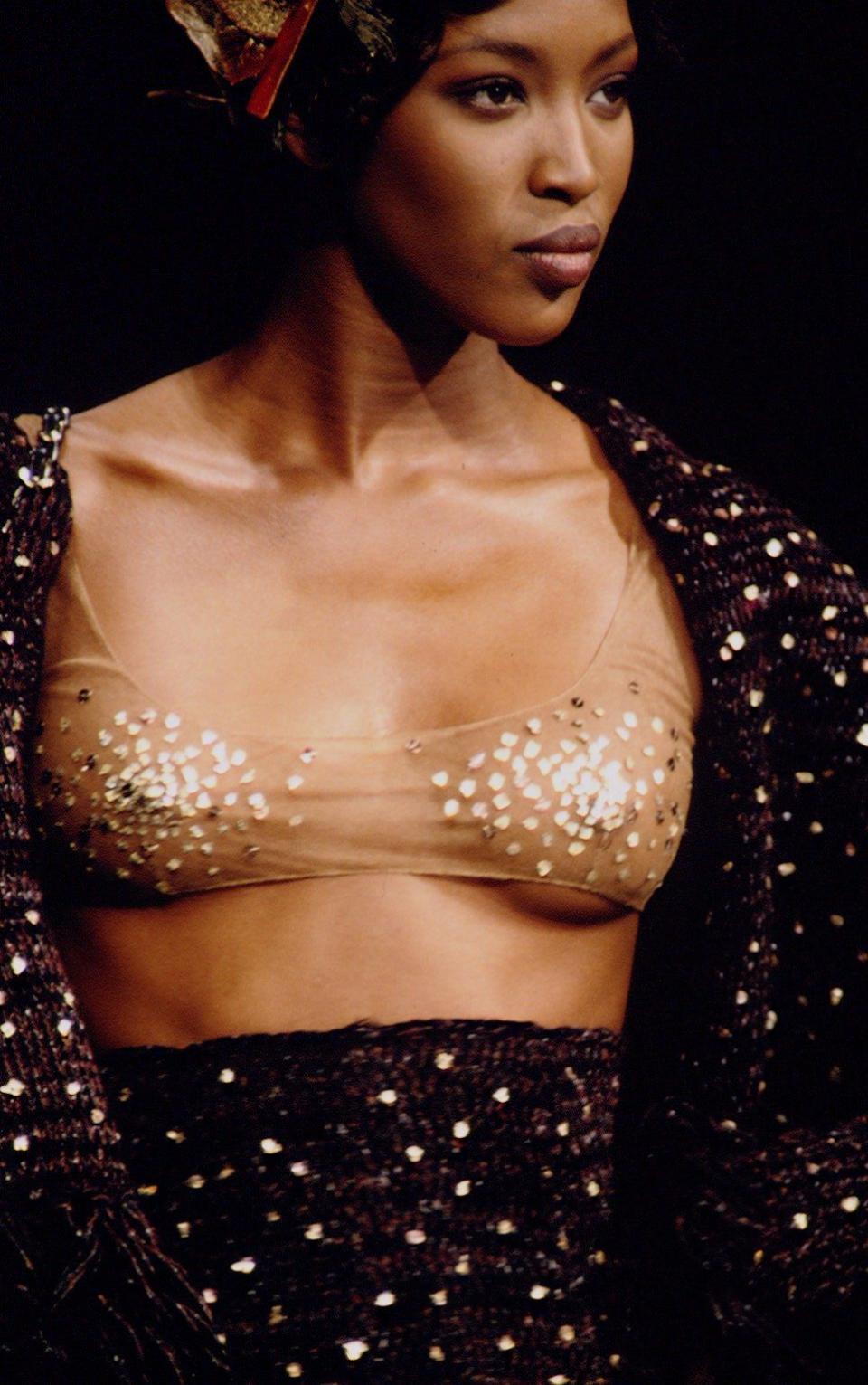
The nipple count remained sky high throughout the Nineties, particularly in the European cities of Milan and Paris. During his tenure at Gucci, Tom Ford frequently incorporated exposed nipples into his collections, as did John Galliano, both in his eponymous collections and in those he designed as creative director of Christian Dior. Whether by exposing them in sheer fabric or allowing them to slip out of a low-cut silk shirt, so common was it to see nipples that they almost lost their power to shock.
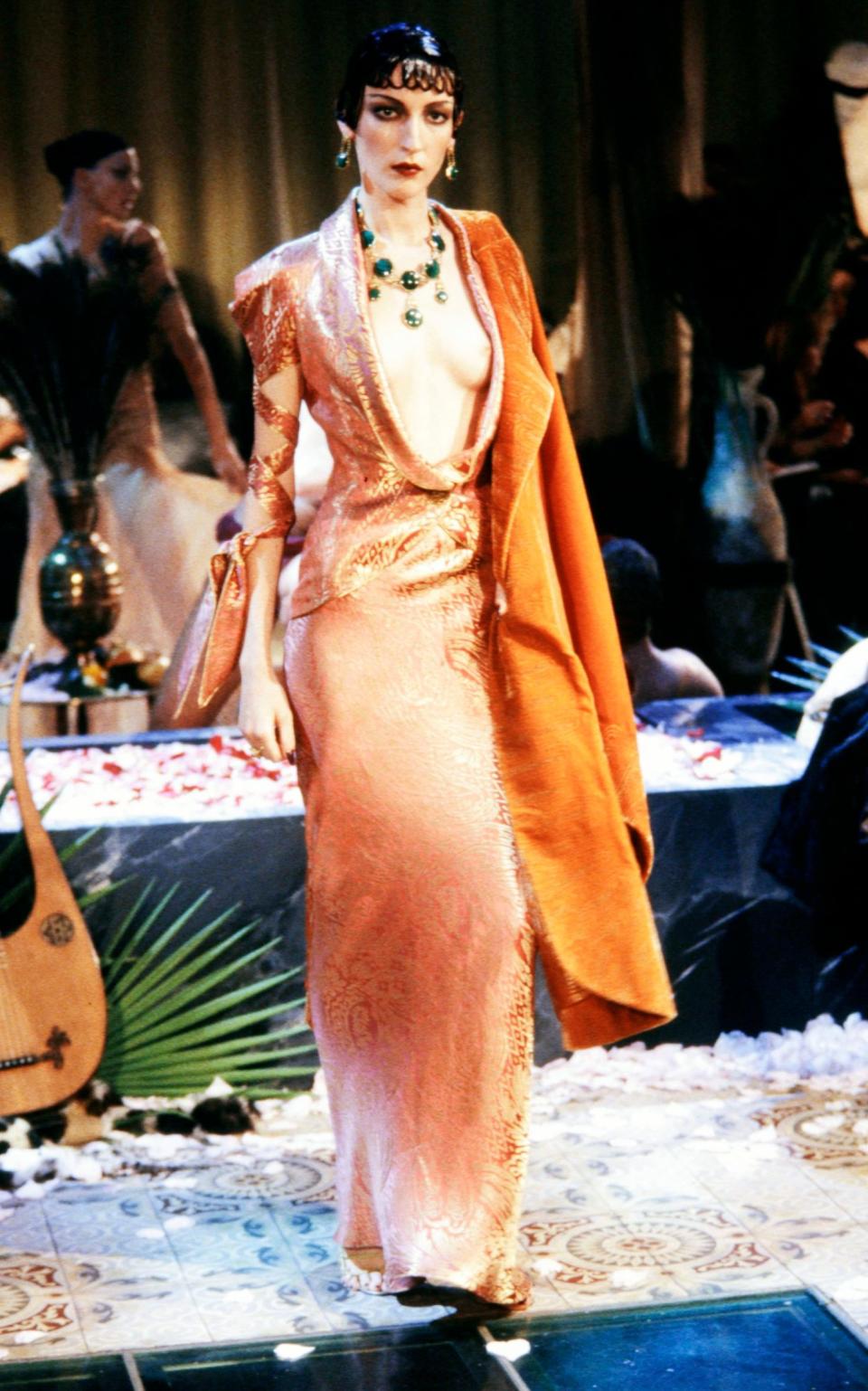
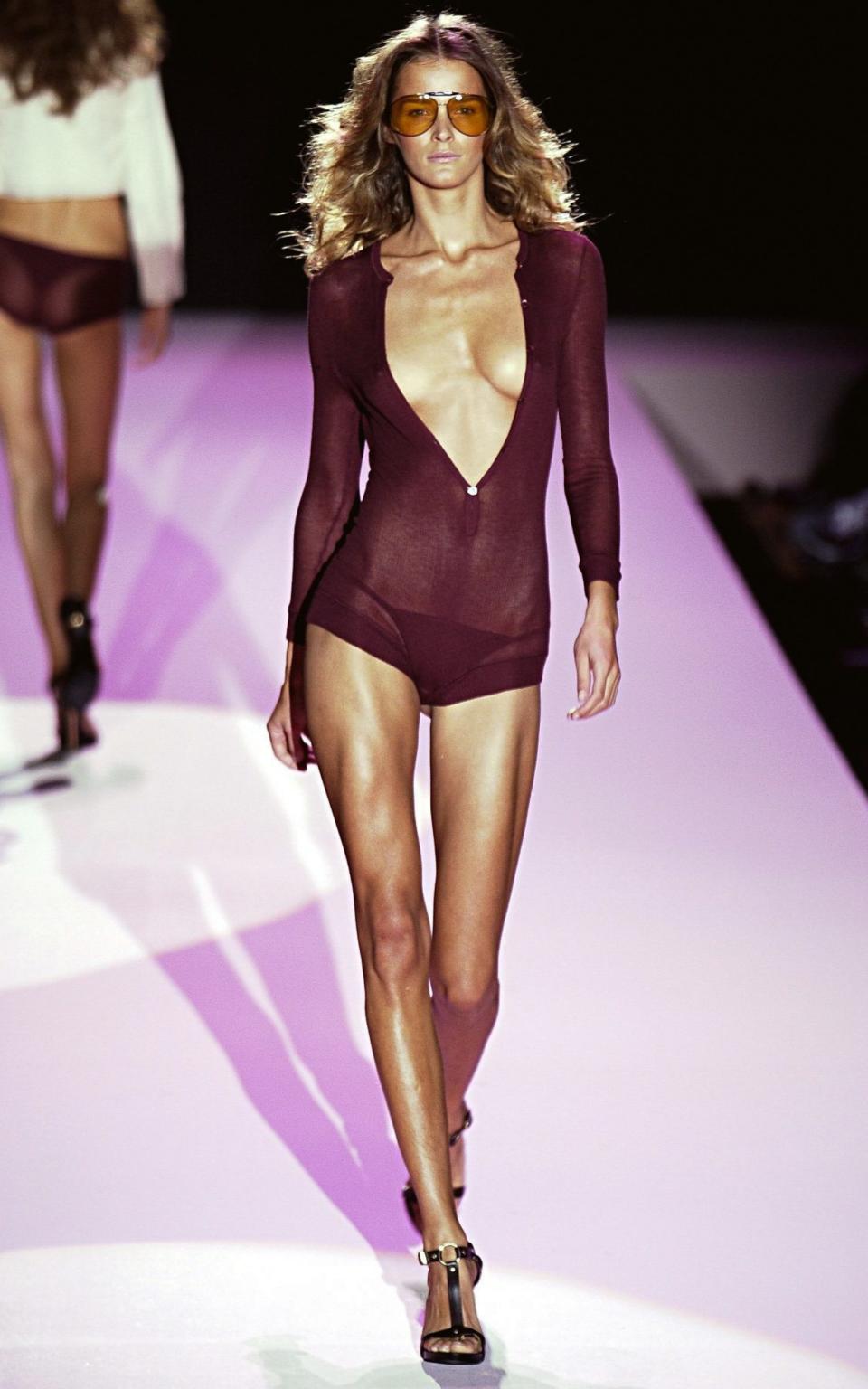
Transposed to the world of advertising, this was less the case. While “nip slips” might be viewed with ambivalence on the catwalk, on a billboard there is no other intention but deliberacy. In 1992, a Calvin Klein jeans ad featuring a then 17 year-old Kate Moss wearing nothing but a pair of jeans caused controversy, not least because she looked so young. “Sex sells” was one of Calvin Klein’s favourite mantras, and Moss was one of his favourite models, appearing topless in his ads many times. It took until 2022 for the supermodel to admit that she had “not very good memories” of the experience. Speaking on Desert Island Discs, she said that during the 1992 shoot she had felt “vulnerable and scared”, adding, “I was quite young and innocent, so Calvin loved that.”
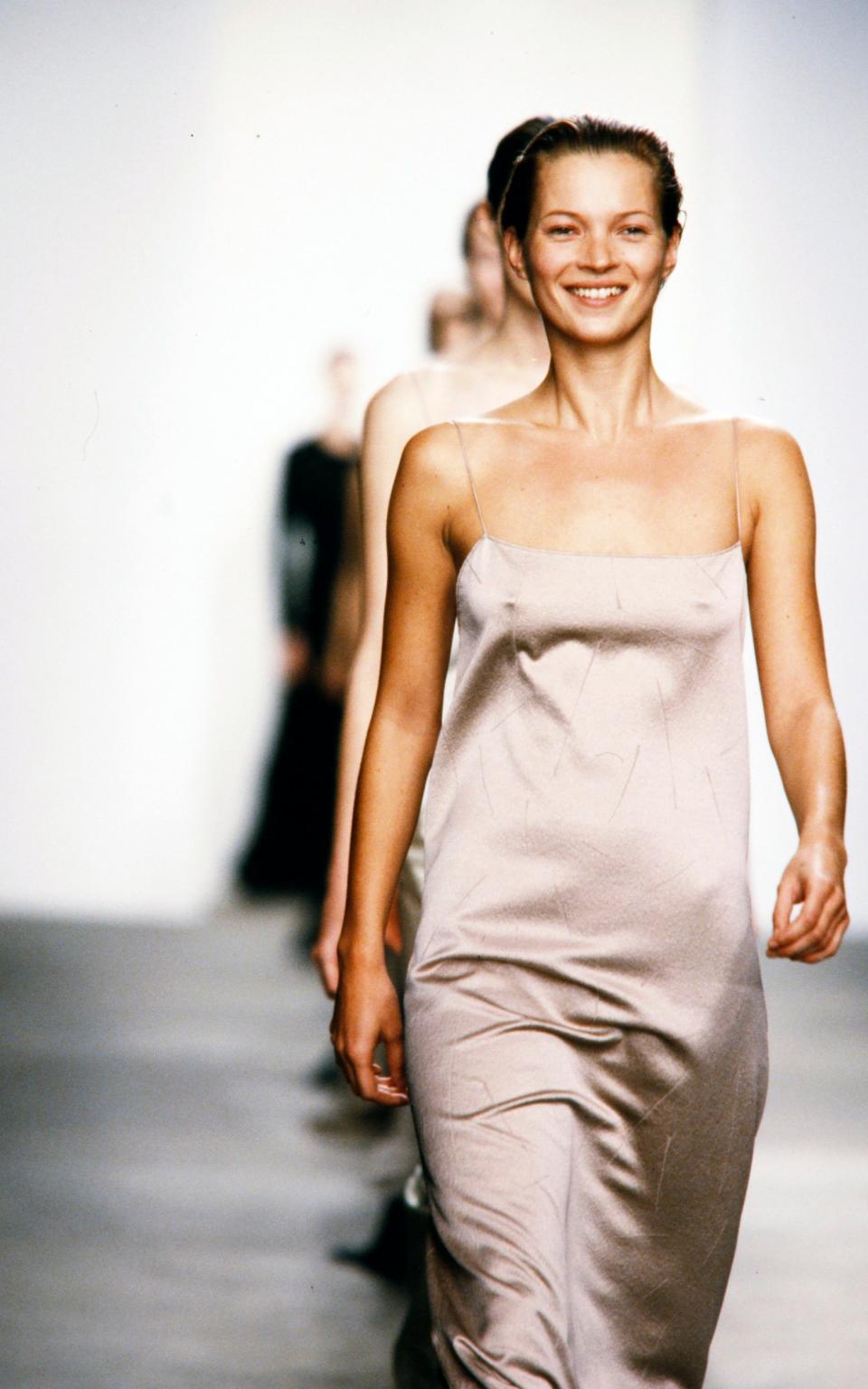
The model and socialite Sophie Dahl had similar regrets about appearing nude in a 2000 ad for Yves Saint Laurent’s Opium fragrance, which showed her cupping one breast in her hand while lying on the ground naked bar a pair of high heels. The Advertising Standards Authority lists it as the eighth most complained-about ads of all time. In 2003, Dahl spoke of how she was embarrassed by having shown so much flesh, and called for there to be less nudity in advertising.
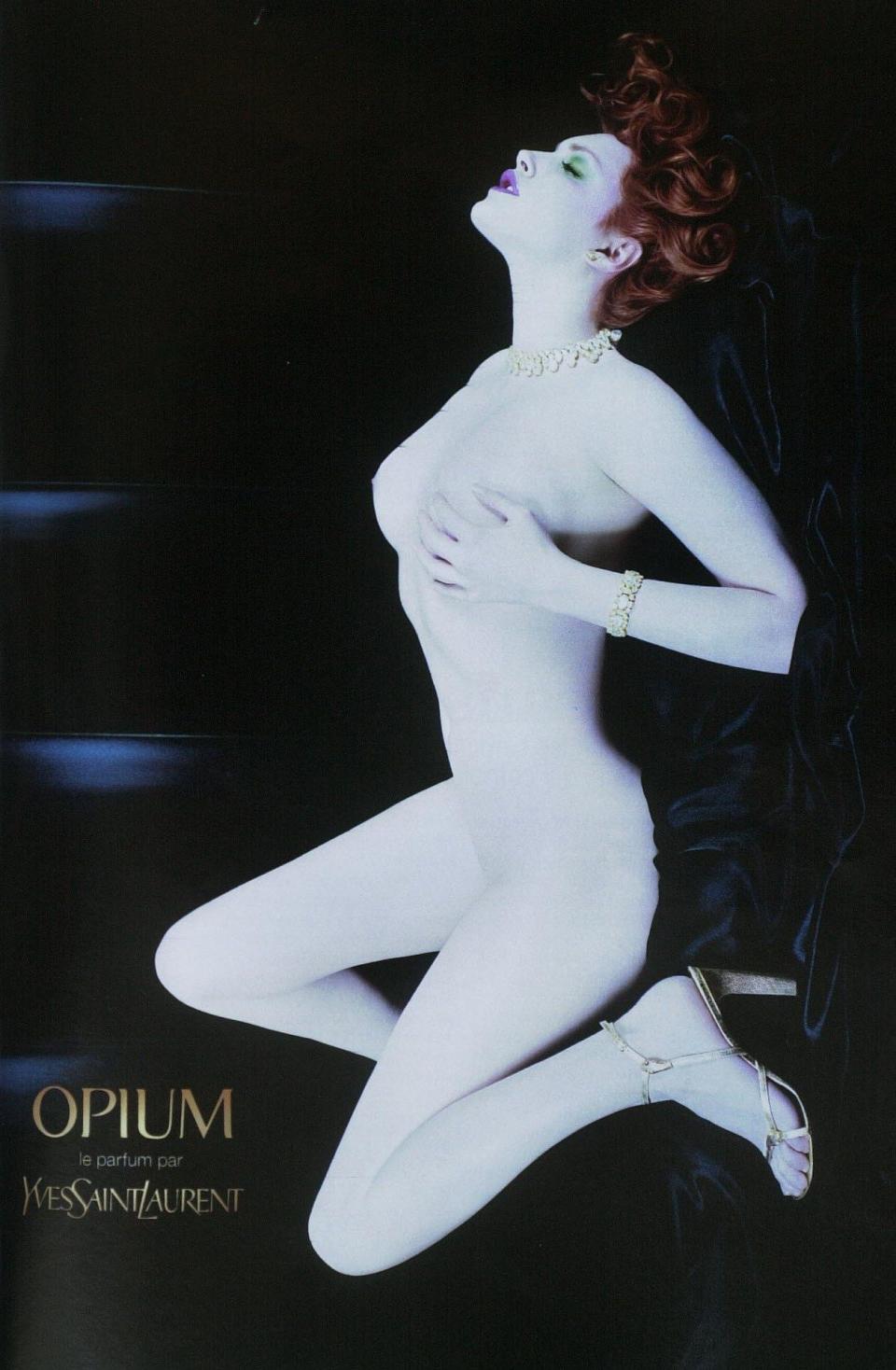
Photographers, like fashion designers, will generally argue that provocation is not their primary motive, defending any nudity as “art”. Alexander McQueen used this defence in his infamous “Highland Rape” collection of 1995, which featured models in sheer tops, and was denounced in some quarters as misogynistic. The show featured tartan as well as naked breasts, and was a statement about “the rape of Scotland”, McQueen explained. Known for his meticulous research and historical references, his argument was broadly accepted. McQueen always loved to shock, but any nudity tended to serve a greater purpose.
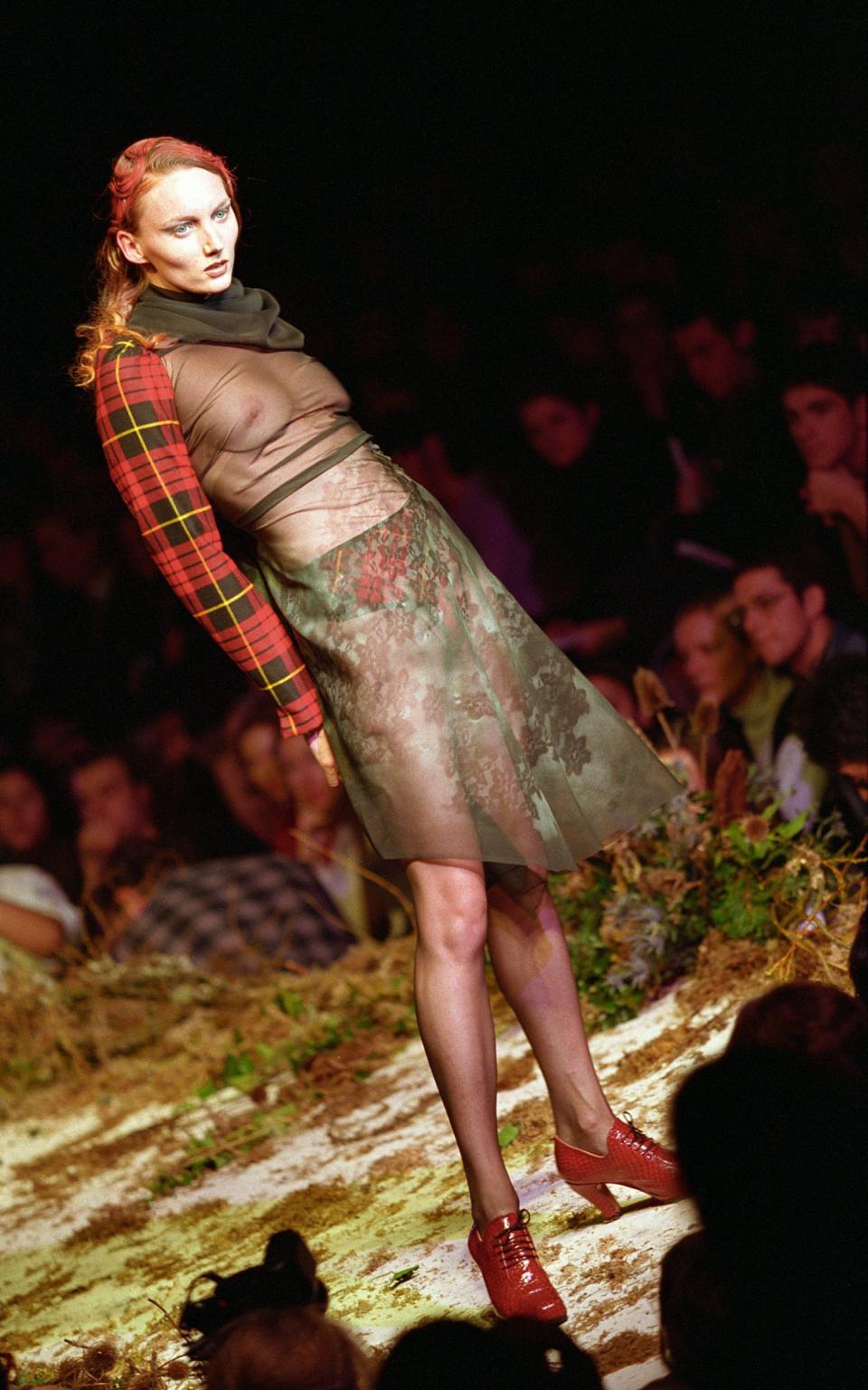
Vaccarello makes similar claims. His show notes explained that his aim was “to remind us of what once was at the centre of fashion by rendering it invisible: clothes”. In other words, the surfeit of bare breasts was a comment on how nudity has become too important, at the expense of clothes.
“I’m not sure how many women’s hearts will leap at the sight of the repetitively nipple-baring garments on show in Paris this week; mine didn’t, but then I’m not in the relevant demographic,” says Justine Picardie, Chanel biographer and author of Miss Dior, and the former editor of Harper’s Bazaar.
“There is nothing new in revealing nipples – as is evident in any museum or art gallery, from the earliest depictions of goddesses, madonnas, mistresses and muses. In 1966 Yves Saint Laurent unveiled his sheer designs that appear to have inspired Vaccarello’s latest collection for the brand. It’s also worth remembering that Saint Laurent also launched his iconic “Le Smoking” jacket in 1966, at the same time as those fleetingly provocative sheer pieces; and he certainly seems to have regarded the tuxedo as the more important of his designs.”
That jacket, as we all know, is the most re-worn of Saint Laurent’s creations – certainly on the streets of Britain. The modern woman isn’t looking for social commentary from her clothes. She’s looking for wardrobe solutions. So, while she might appreciate the clever artistry of the nipple reveal on the catwalk, that’s precisely where it will remain. There are easier ways to keep abreast of fashion than by baring them.


